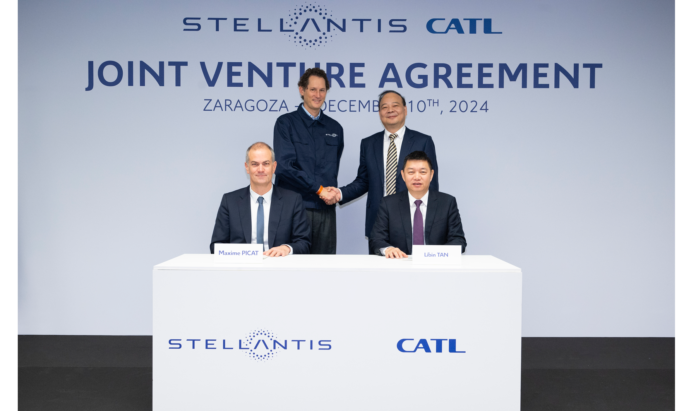Stellantis and CATL have announced a significant joint venture, committing up to €4.1 billion to build a large-scale lithium iron phosphate (LFP) battery plant in Zaragoza, Spain. This plant, part of Stellantis’ push toward sustainability and decarbonization, is projected to start production by the end of 2026, with a planned capacity of up to 50 GWh depending on market and governmental support. The initiative represents a critical step in supporting Stellantis’ strategy to expand its electric vehicle offerings in the European market, focusing on affordable, durable battery-electric cars in the B and C segments.
This collaboration builds on an earlier agreement between Stellantis and CATL, established in November 2023, to enhance the supply chain for LFP battery cells and modules in Europe. The partnership aims to advance Stellantis’ battery-electric vehicle (BEV) technology roadmap and strengthen the European battery value chain. Both companies envision the plant as a model of sustainability, aligning with Stellantis’ ambition to achieve carbon net zero by 2038 and CATL’s commitment to promoting zero-carbon technology on a global scale. Leaders from both organizations emphasized the plant’s potential to combine Stellantis’ extensive automotive experience with CATL’s cutting-edge battery expertise, positioning it as a key driver of the green energy transition.
The joint venture reflects broader trends in the European battery industry, as CATL continues to expand its footprint with existing facilities in Germany and Hungary. The Zaragoza project complements Stellantis’ dual-chemistry battery approach, leveraging both lithium-ion nickel manganese cobalt (NMC) and LFP technologies to cater to diverse consumer needs. This initiative not only reinforces Stellantis’ and CATL’s leadership in sustainable innovation but also demonstrates their commitment to collaborating with local authorities and stakeholders to advance the region’s e-mobility and environmental goals.







